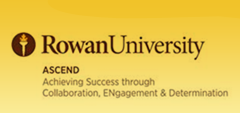Location
Room 221C, Chamberlain Student Center
Start Date
13-2-2019 11:00 AM
End Date
13-2-2019 12:00 PM
Document Type
Presentation
Description
Based on a 5-year study at Montgomery County Community College (PA), during which academic support and mentorship programming was developed for student-athletes, four key pillars of support were identified as contributory to increases in completion rates, success rates and GPA among students from underserved populations (including, but not limited to, students who identify as being first generation, minority, LGBTQ, disabled, poverty-stricken, underprepared, non-traditional, international or displaced). Students participating in all four pillar programs performed 321% better than average; participation in three of the four programs resulted in a 96% better performance; and those participating in two or less of the programs significantly underperformed against the cohort’s average. The study produced a model of academic and social support structures that 1) can increase success among underserved student-athletes, 2) is applicable to a number of underserved populations, and 3) can be replicated across academic institutions by leveraging and coordinating the efforts of currently-existing programs.
Included in
Community College Leadership Commons, Educational Leadership Commons, Higher Education Commons, Student Counseling and Personnel Services Commons
Coordinating Resources Efficiently to Bolster Success Among Underserved College Students
Room 221C, Chamberlain Student Center
Based on a 5-year study at Montgomery County Community College (PA), during which academic support and mentorship programming was developed for student-athletes, four key pillars of support were identified as contributory to increases in completion rates, success rates and GPA among students from underserved populations (including, but not limited to, students who identify as being first generation, minority, LGBTQ, disabled, poverty-stricken, underprepared, non-traditional, international or displaced). Students participating in all four pillar programs performed 321% better than average; participation in three of the four programs resulted in a 96% better performance; and those participating in two or less of the programs significantly underperformed against the cohort’s average. The study produced a model of academic and social support structures that 1) can increase success among underserved student-athletes, 2) is applicable to a number of underserved populations, and 3) can be replicated across academic institutions by leveraging and coordinating the efforts of currently-existing programs.


